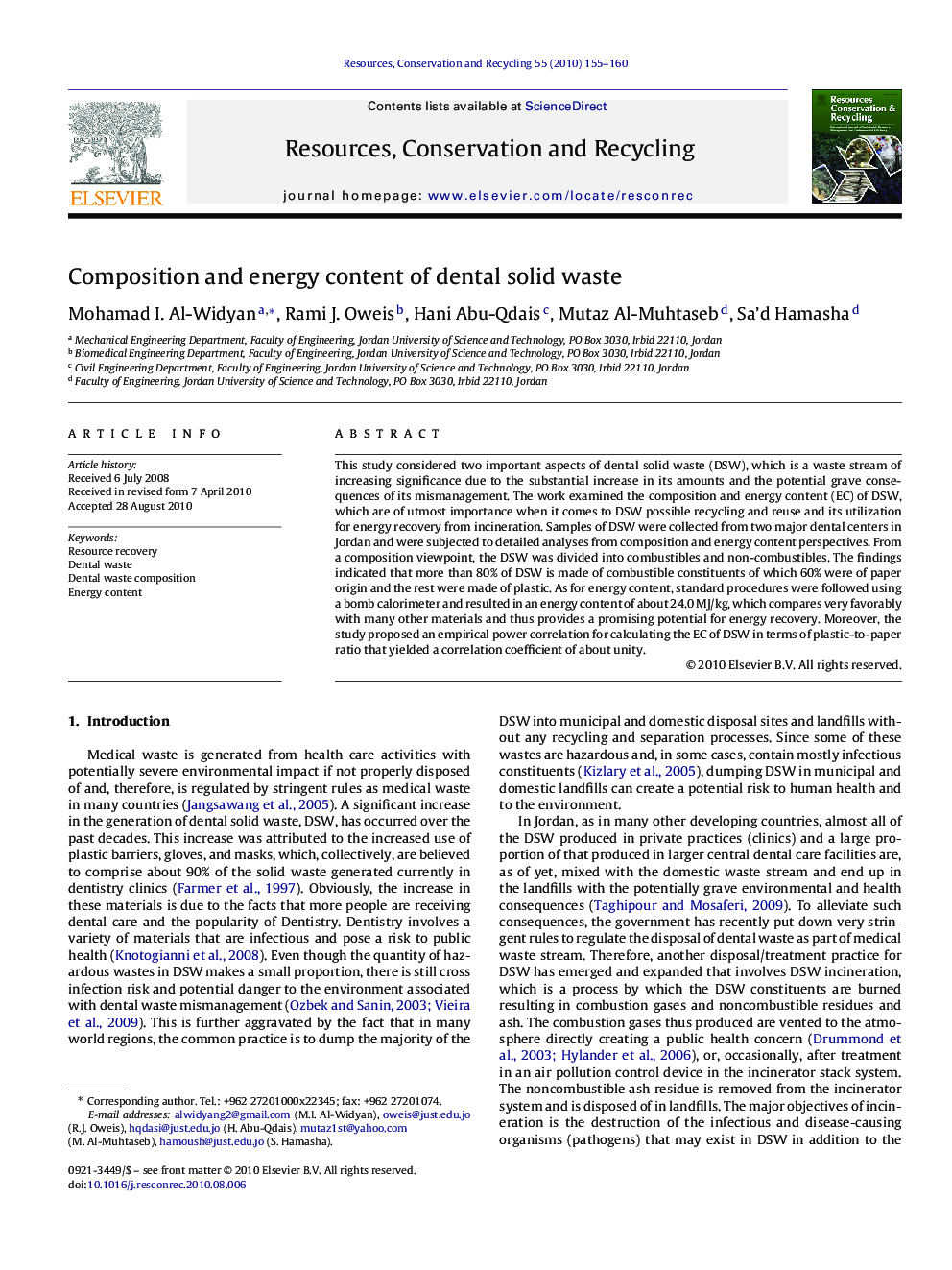| Article ID | Journal | Published Year | Pages | File Type |
|---|---|---|---|---|
| 1063671 | Resources, Conservation and Recycling | 2010 | 6 Pages |
This study considered two important aspects of dental solid waste (DSW), which is a waste stream of increasing significance due to the substantial increase in its amounts and the potential grave consequences of its mismanagement. The work examined the composition and energy content (EC) of DSW, which are of utmost importance when it comes to DSW possible recycling and reuse and its utilization for energy recovery from incineration. Samples of DSW were collected from two major dental centers in Jordan and were subjected to detailed analyses from composition and energy content perspectives. From a composition viewpoint, the DSW was divided into combustibles and non-combustibles. The findings indicated that more than 80% of DSW is made of combustible constituents of which 60% were of paper origin and the rest were made of plastic. As for energy content, standard procedures were followed using a bomb calorimeter and resulted in an energy content of about 24.0 MJ/kg, which compares very favorably with many other materials and thus provides a promising potential for energy recovery. Moreover, the study proposed an empirical power correlation for calculating the EC of DSW in terms of plastic-to-paper ratio that yielded a correlation coefficient of about unity.
